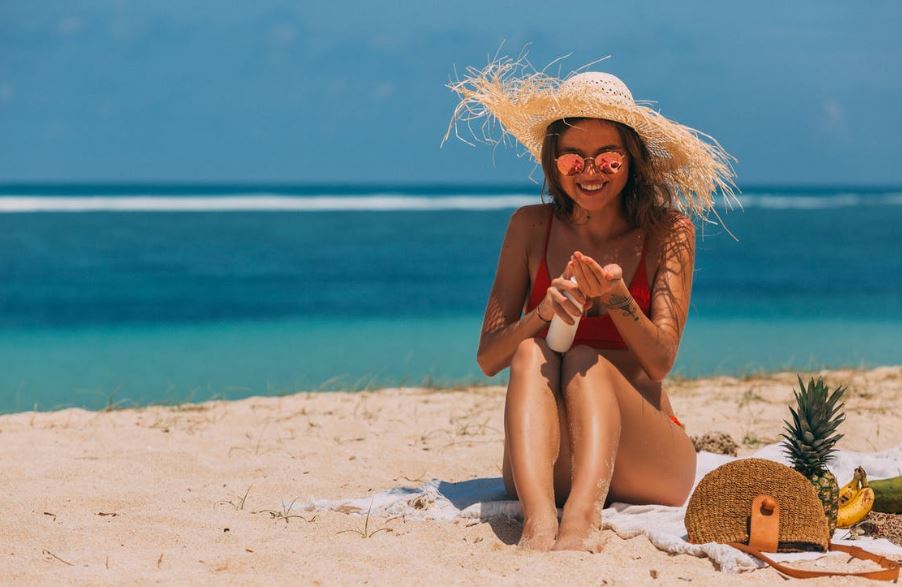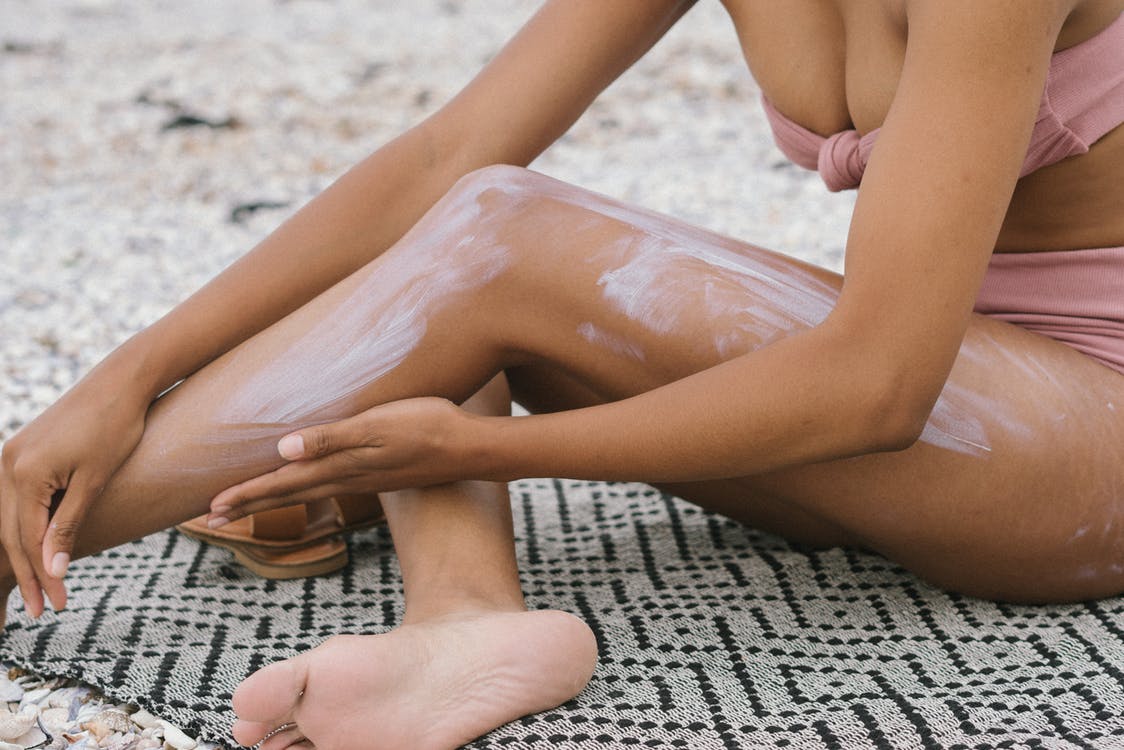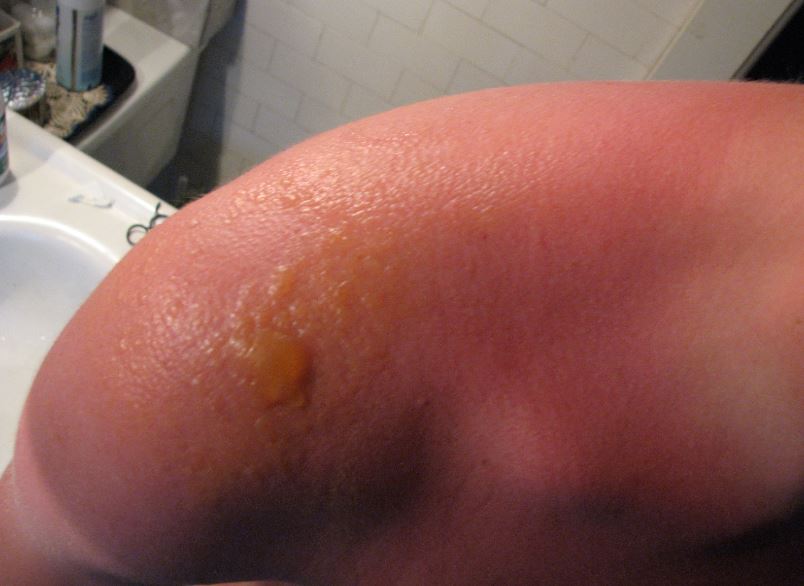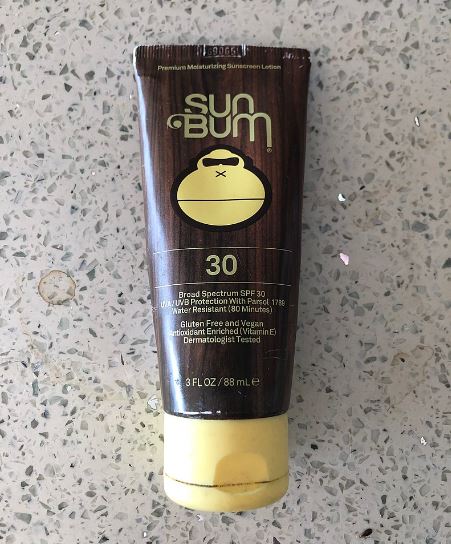Ancient societies used plant extracts and other natural ingredients such as rice bran, jasmine, and olive oil to block the sun’s rays, from the Egyptians to the Greeks and Romans. However, the intention was primarily for beauty because people recognized that sun exposure resulted in tanned skin, and lighter skin was thought to be more appealing.
SPF stands for sun protection factor, which is a relative measurement of how long sunscreen will protect you from ultraviolet (UV) rays. UVB rays primarily affect the epidermis, the skin’s outer layer. They cause sunburns and some skin cancers on the surface. The sun also emits UVA rays, which can penetrate the dermis, the lower layer of skin. UVA rays are commonly associated with “tanning,” but the darker color of the skin is a sign of dermal cell damage. SPF numbers are typically only for UVB rays, but some sunscreens can also protect against UVA rays.
A Painful Experience Leads to the Invention of the Sunscreen
In 1938, a Swiss student named Franz Grieter invented the first commercially successful sunscreen in the United States. He is also credited with coining the term “Sun Protection Factor,” abbreviated as “SPF.”
Greiter was climbing an Appalachian Mountain range when he was scorched to death by the sun’s rays. This painful experience inspired him to create “Glacier Cream,” a sun-blocking lotion with only an SPF 2 rating that was eventually bought and sold by a company called Piz Buin, a brand that is still going strong to this day.
The Importance of Sunscreen Application
Sunscreen is important because it protects your skin from the harmful effects of sun exposure. Sunburns, blisters, wrinkles, sunspots, and, in the worst-case scenario, skin cancer are all examples. In fact, an estimated 100,350 new cases of melanoma are diagnosed in the United States each year. Your best defense is a good sunscreen with a high SPF as one of the many ways to protect your skin when swimming especially during summer or whenever you do things that will expose you to too much sunlight.
Know Your SPF and How Long it Can Protect You
Assume you typically burn after 30 minutes of being outside and plan to use an SPF 15 sunscreen. In this case, you’d multiply 30 by the SPF, which is 15. That means you’re technically safe for 450 minutes, or 7.5 hours—but keep in mind, this is only technically true. Most sunscreens will fade much sooner due to exposure to the elements as well as improper application. It is advised to reapply every two hours. The number of UVB rays you are protected from increases slightly with SPF. SPF 15 filters out 93 percent of UVB rays, SPF 30 filters out 97 percent, and SPF 100 filters out 99 percent.
Know Your Limits
It’s critical to understand what the FDA study discovered and what it didn’t. “Up until this point, sunscreens were not thought to be a concern at all,” says Rivka Stone, MD, an assistant professor at the University of Miami Miller School of Medicine’s Phillip Frost Department of Dermatology & Cutaneous Surgery. “However, they discovered that the levels exceeded the threshold for indifference.”
Without further testing, active ingredients should not be absorbed through the skin and into the bloodstream at levels greater than 0.5 nanograms per milliliter (ng/mL). However, researchers discovered that oxybenzone was absorbed at a level of 258.1 ng/mL when applied every two hours as directed on the bottle. That amounts to 516 times the FDA’s limit.
Although oxybenzone had the highest absorption rate, the other five active ingredients were also absorbed in extremely high levels. “Those range from nine to 37 times the FDA cutoff rate; absorption occurs, but not at the rate of oxybenzone,” says Apple Bodemer, MD, a dermatologist at UW Health.
The Two Types of Sunscreens
1. Chemical Sunscreens
Chemical sunscreens, also known as organic sunscreens, are made up of chemical compounds that absorb UV rays. Formulas such as oxybenzone, octinoxate, octisalate, and avobenzone are examples of these chemical compounds. UV rays are converted into heat by these chemicals, which are then released from the skin and dispersed.
2. Physical or Mineral Blockers
Sunblock is another name for physical sunscreens. To block UV rays, they use mineral-based ingredients such as titanium dioxide and zinc oxide. Physical sunscreens work by remaining on top of the skin and deflecting and scattering harmful UV rays away from it.
Some of the Most Popular Sunscreen Brands
Since its inception, the sunscreen industry has become extremely “hot.” Whether it’s a sporty spray for outdoor volleyball or a sweet coconut-scented lotion for your trip to Hawaii, you’ll find plenty of options at stores. The following are the most popular sunscreen brands:
Banana Boat, Neutrogena, Hawaiian Tropic, L’Oreal, and Supergoop, Aveeno, La Roche-Posay, BullFrog Sunscreen, Badger Organic, COOLA, Nivea, EltaMD, Blue Lizard.
It is your responsibility to shop around and select the best sunscreen for your skin type. Above all, make sure you apply 15 minutes before going outside and reapply every 2 hours. When it comes to sun protection, you can never be too cautious.
The White Sunscreen on the Nose
In the late 1980s, Zinka made it trendy to paint your nose with chalk-white sunscreen. Tannable was later sold in Day-Glo colors so “wacky youths” could “come to the beach as Indians on the warpath.”
Zinka’s popularity and marketing campaign didn’t last, but the product shows how zinc oxide works. Zinka’s formulation, which contained large, opaque particles of zinc oxide, blocked UV waves before they reached the nose.
The Benefits of Using Sunscreen
The importance of wearing sunscreen had been a subject of many studies. A 2013 study concluded that using sunscreen daily could slow or prevent the development of wrinkles and sagging skin. The study included 900 white Australians who were required to apply a broad-spectrum sunscreen every day for four and a half years. It discovered that those who did so had noticeably more resilient and smoother skin than those who were instructed to continue with their usual practices. A study of 32 subjects found that daily use of sunscreen (SPF 30) reversed photoaging of the skin within 12 weeks and that the improvement lasted until the end of the one-year study period.
In conclusion, the most important factor is that you use sunscreen on a regular basis, regardless of the type. Dermatologists can assist you in selecting a sunscreen and customized skin care regimen to keep your skin looking great and prevent future damage. However, if your skin is not that sensitive, there are several over-the-counter sunscreens that you can choose from.






